Stable RNA nanoparticles as potential new generation drugs for cancer therapy
- PMID: 24270010
- PMCID: PMC3955949
- DOI: 10.1016/j.addr.2013.11.006
Stable RNA nanoparticles as potential new generation drugs for cancer therapy
Abstract
Human genome sequencing revealed that only ~1.5% of the DNA sequence coded for proteins. More and more evidence has uncovered that a substantial part of the 98.5% so-called "junk" DNAs actually code for noncoding RNAs. Two milestones, chemical drugs and protein drugs, have already appeared in the history of drug development, and it is expected that the third milestone in drug development will be RNA drugs or drugs that target RNA. This review focuses on the development of RNA therapeutics for potential cancer treatment by applying RNA nanotechnology. A therapeutic RNA nanoparticle is unique in that its scaffold, ligand, and therapeutic component can all be composed of RNA. The special physicochemical properties lend to the delivery of siRNA, miRNA, ribozymes, or riboswitches; imaging using fluogenenic RNA; and targeting using RNA aptamers. With recent advances in solving the chemical, enzymatic, and thermodynamic stability issues, RNA nanoparticles have been found to be advantageous for in vivo applications due to their uniform nano-scale size, precise stoichiometry, polyvalent nature, low immunogenicity, low toxicity, and target specificity. In vivo animal studies have revealed that RNA nanoparticles can specifically target tumors with favorable pharmacokinetic and pharmacodynamic parameters without unwanted accumulation in normal organs. This review summarizes the key studies that have led to the detailed understanding of RNA nanoparticle formation as well as chemical and thermodynamic stability issue. The methods for RNA nanoparticle construction, and the current challenges in the clinical application of RNA nanotechnology, such as endosome trapping and production costs, are also discussed.
Keywords: Bacteriophage phi29; Biodistribution of nanoparticles; Cancer targeting; Nanobiotechnology; Pharmacokinetics; RNA nanotechnology; RNA therapeutics; Three-way junction; pRNA.
Copyright © 2013 Elsevier B.V. All rights reserved.
Figures
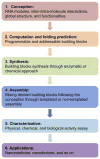
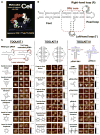

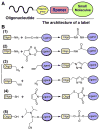



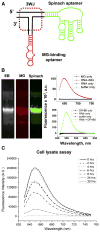
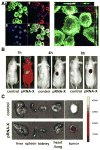


Similar articles
-
Fabrication of 14 different RNA nanoparticles for specific tumor targeting without accumulation in normal organs.RNA. 2013 Jun;19(6):767-77. doi: 10.1261/rna.037002.112. Epub 2013 Apr 19. RNA. 2013. PMID: 23604636 Free PMC article.
-
Favorable biodistribution, specific targeting and conditional endosomal escape of RNA nanoparticles in cancer therapy.Cancer Lett. 2018 Feb 1;414:57-70. doi: 10.1016/j.canlet.2017.09.043. Epub 2017 Oct 5. Cancer Lett. 2018. PMID: 28987384 Free PMC article. Review.
-
Using Planar Phi29 pRNA Three-Way Junction to Control Size and Shape of RNA Nanoparticles for Biodistribution Profiling in Mice.Methods Mol Biol. 2017;1632:359-380. doi: 10.1007/978-1-4939-7138-1_23. Methods Mol Biol. 2017. PMID: 28730451
-
Functional assays for specific targeting and delivery of RNA nanoparticles to brain tumor.Methods Mol Biol. 2015;1297:137-52. doi: 10.1007/978-1-4939-2562-9_10. Methods Mol Biol. 2015. PMID: 25896001 Free PMC article.
-
Assembly of multifunctional phi29 pRNA nanoparticles for specific delivery of siRNA and other therapeutics to targeted cells.Methods. 2011 Jun;54(2):204-14. doi: 10.1016/j.ymeth.2011.01.008. Epub 2011 Feb 12. Methods. 2011. PMID: 21320601 Free PMC article. Review.
Cited by
-
RNA Combined with Nanoformulation to Advance Therapeutic Technologies.Pharmaceuticals (Basel). 2023 Nov 21;16(12):1634. doi: 10.3390/ph16121634. Pharmaceuticals (Basel). 2023. PMID: 38139761 Free PMC article. Review.
-
microRNA-205 in prostate cancer: Overview to clinical translation.Biochim Biophys Acta Rev Cancer. 2022 Nov;1877(6):188809. doi: 10.1016/j.bbcan.2022.188809. Epub 2022 Oct 1. Biochim Biophys Acta Rev Cancer. 2022. PMID: 36191828 Free PMC article. Review.
-
Cell-type-specific, Aptamer-functionalized Agents for Targeted Disease Therapy.Mol Ther Nucleic Acids. 2014 Jun 17;3(6):e169. doi: 10.1038/mtna.2014.21. Mol Ther Nucleic Acids. 2014. PMID: 24936916 Free PMC article.
-
Innovative delivery of siRNA to solid tumors by super carbonate apatite.PLoS One. 2015 Mar 4;10(3):e0116022. doi: 10.1371/journal.pone.0116022. eCollection 2015. PLoS One. 2015. PMID: 25738937 Free PMC article.
-
Non-Small-Cell Lung Cancer Regression by siRNA Delivered Through Exosomes That Display EGFR RNA Aptamer.Nucleic Acid Ther. 2021 Oct;31(5):364-374. doi: 10.1089/nat.2021.0002. Epub 2021 May 17. Nucleic Acid Ther. 2021. PMID: 33999716 Free PMC article.
References
-
- Lander ES, Linton LM, Birren B, Nusbaum C, Zody MC, Baldwin J, Devon K, Dewar K, et al. Initial sequencing and analysis of the human genome. Nature. 2001;409:860–921. - PubMed
-
- Novoa EM, Pavon-Eternod M, Pan T, Ribas de PL. A role for tRNA modifications in genome structure and codon usage. Cell. 2012;149:202–213. - PubMed
-
- Yusupov MM, Yusupova GZ, Baucom A, Lieberman K, Earnest TN, Cate JH, Noller HF. Crystal structure of the ribosome at 5.5 A resolution. Science. 2001;292:883–896. - PubMed
Publication types
MeSH terms
Substances
Grants and funding
LinkOut - more resources
Full Text Sources
Other Literature Sources

